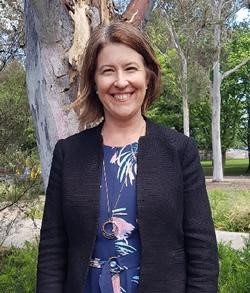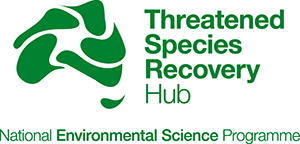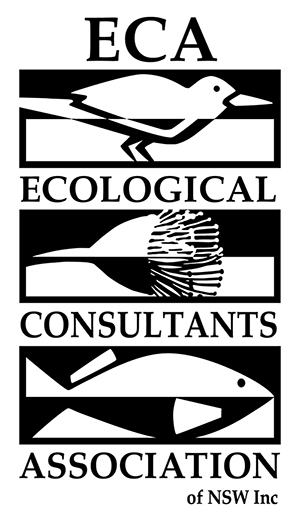| Welcome to Conference Launch of the 3rd edition of the ANPC’s Guidelines for the Translocation of Threatened Plants in Australia. Threatened Species Commissioner Dept of Environment and Energy Dr Sally Box has been appointed as Australia’s new Threatened Species Commissioner. The Threatened Species Commissioner champions the implementation of the Threatened Species Strategy and practical conservation actions to recover our most threatened plants and animals. Using the principles of science, action and partnership, the Commissioner works with conservation organisations, governments, community and the private sector to improve the trajectory of our threatened species. “Dr Box will continue the excellent work already underway, develop new initiatives and approaches and increase momentum for threatened species conservation,” said Minister for the Environment and Energy, the Hon Josh Frydenberg MP. Dr Box has a PhD in Plant Sciences and began her career in the Department of the Environment and Energy working on threatened species assessments. Since, she has worked with the community to design and deliver programs focused on threatened species conservation, including through her leadership of the Green Army. Dr Box has also worked in partnership with scientists and landholders to deliver the Emissions Reduction Fund and most recently worked on the Paris Agreement in the Department’s international climate change area. Dr Box took up the position of Threatened Species Commissioner in late January 2018. |
 Session 1: Moving house – lessons from the past – who’s done what where and what do we now know? Exploring plant introductions across Australia over the past 30 years. Session 1: Moving house – lessons from the past – who’s done what where and what do we now know? Exploring plant introductions across Australia over the past 30 years.“There is nothing new in the world except the history you don’t know.” Harry S. Trueman Plenary Speaker: Dr Jennifer Silcock Postdoctoral Research Fellow National Environmental Science Program – Threatened Species Recovery Hub University of Queensland ‘Australian plant translocations: a 60,000 year history.‘ Download Jen’s conference abstract here. Jen Silcock is a post-doctoral researcher with the National Environmental Science Program’s Threatened Species Recovery Hub. She also has long-term research interests in the Australian arid zone, including historical ecology, rare and threatened flora and fauna, grazing and fire impacts, and long-term vegetation change.
This session is sponsored by the Threatened Species Recovery Hub
|
 Session 2: Moving house – what’s new? Session 2: Moving house – what’s new?This session will include new approaches, ideas or tools to assist you when making decisions about moving plants. “If everyone is moving forward together, then success takes care of itself.” Henry Ford Plenary Speaker: Dr Peter Vesk Reader and Associate Professor University of Melbourne ‘Plant conservation actions and comparative ecology: But we don’t know enough!’ Download Peter’s conference abstract here. Peter Vesk completed BSc & MSc degrees at the University of Sydney, before a PhD at Macquarie University working on Plant Functional Types, Grazing and Fire. After a post doc at Monash University working on landscape reconstruction in whet-sheep area, he moved to the University of Melbourne. His work has two themes: generalisation of species knowledge and ecological management. Much of his work draws on modelling and analysis. |
This session will include presentations about what lessons have been learnt by moving other types of organisms to expand our understanding of the role and importance of plants. “Any investment in knowledge pays the best interest.” Benjamin Franklin Plenary Speaker: Sarah Legge Associate Professor; Principle Research Fellow Australian National University; University of Queensland ‘Mammals – looking backwards, moving forwards.’ Download Sarah’s conference abstract here. Sarah is a Deputy Director of the NESP Threatened Species recovery Hub. She is an applied ecologist, her research focusses on finding ways to reduce the impacts of threats on threatened species.
This session is sponsored by the Threatened Species Recovery Hub |
Showcasing partnership projects including citizen science where multiple stakeholders have engaged in translocation and restoration projects. A session not just on what’s worked! Here we’ll share what didn’t work and how we can use these findings to improve partnerships in the future “Some of the best lessons we ever learn are learned from past mistakes. The error of the past is the wisdom and success of the future.” Dale Turner Plenary Speaker: Belinda Pellow Senior Botanist AMBS Ecology & Heritage ‘From a Burnt-Out Basement to a new Home in the Sun: The role of ecological consultants in plant translocation.’ Download Belinda’s conference abstract here. Belinda has worked for over 30 years in University Herbaria and as an ecological consultant. Belinda was lead author on the 5th edition of the Flora of the Sydney Region. She is currently President of the Ecological Consultants Association of NSW
This session is sponsored by the Ecological Consultants Association of NSW Inc. |
 Session 5: Conserving threatened plants, and the policy and politics of translocation. Session 5: Conserving threatened plants, and the policy and politics of translocation.Here we will explore the policy and politics of moving plants – hear from experts about their expectations for policy that guides when, how and where we move plants. “Avoid any specific discussion of public policy at public meetings.” Quintus Tullius Cicero Plenary Speaker: Peter Latch Dept of Environment and Energy ‘Translocating threatened plants: linking policy, planning and practice’ Download Peter’s conference abstract here. Peter has many years of experience working within local, state and Federal government agencies in protected area management, biodiversity planning and threatened species conservation. He is Director Terrestrial Threatened Species and works with many groups across the country to facilitate national recovery planning efforts for threatened species. |
 Session 6: Do you need a safe deposit box? The importance of ex-situ conservation in translocation. Session 6: Do you need a safe deposit box? The importance of ex-situ conservation in translocation.Here we will explore the role of ex situ conservation in plant translocation and restoration including examples of successful plant reintroductions from ex situ collections. “Banking’s a sexy industry! Creative – it’s dynamic, it’s global, it’s fast-moving, you bring a lot of talented people together!” James P. Gorman Plenary Speaker: Mr Damian Wrigley National Coordinator, Australian Seed Bank Partnership Australian National Botanic Gardens ‘Ex situ seed banks are a good investment as small deposits drive big returns’. Download Damian’s conference abstract here. Damian Wrigley is the National Coordinator of the Australian Seed Bank Partnership. He coordinates national and international ex-situ seed conservation, capacity building and research collaborations on behalf of the Partnership. Previously the Knowledge Broker for the National Environmental Science Program, Damian has over ten years’ experience in biodiversity conservation policy and environmental science. Damian is Australia’s National Focal Point for the Global Strategy for Plant Conservation. |



 Session 3: Crossing over – what can we learn from restoring plant communities and moving organisms other than plants?
Session 3: Crossing over – what can we learn from restoring plant communities and moving organisms other than plants? Session 4: Effective partnerships – who, why and how? What works and what doesn’t?
Session 4: Effective partnerships – who, why and how? What works and what doesn’t?